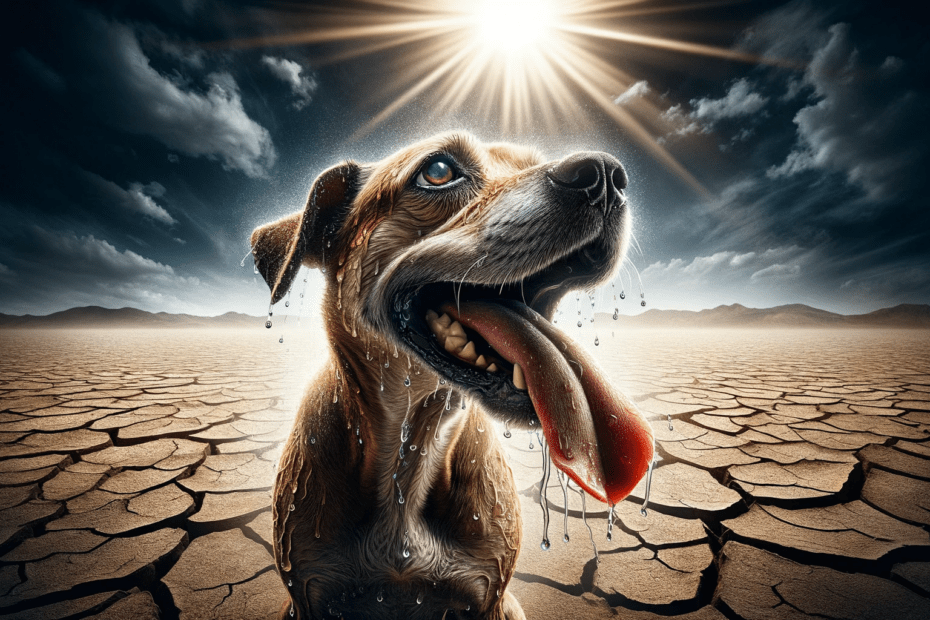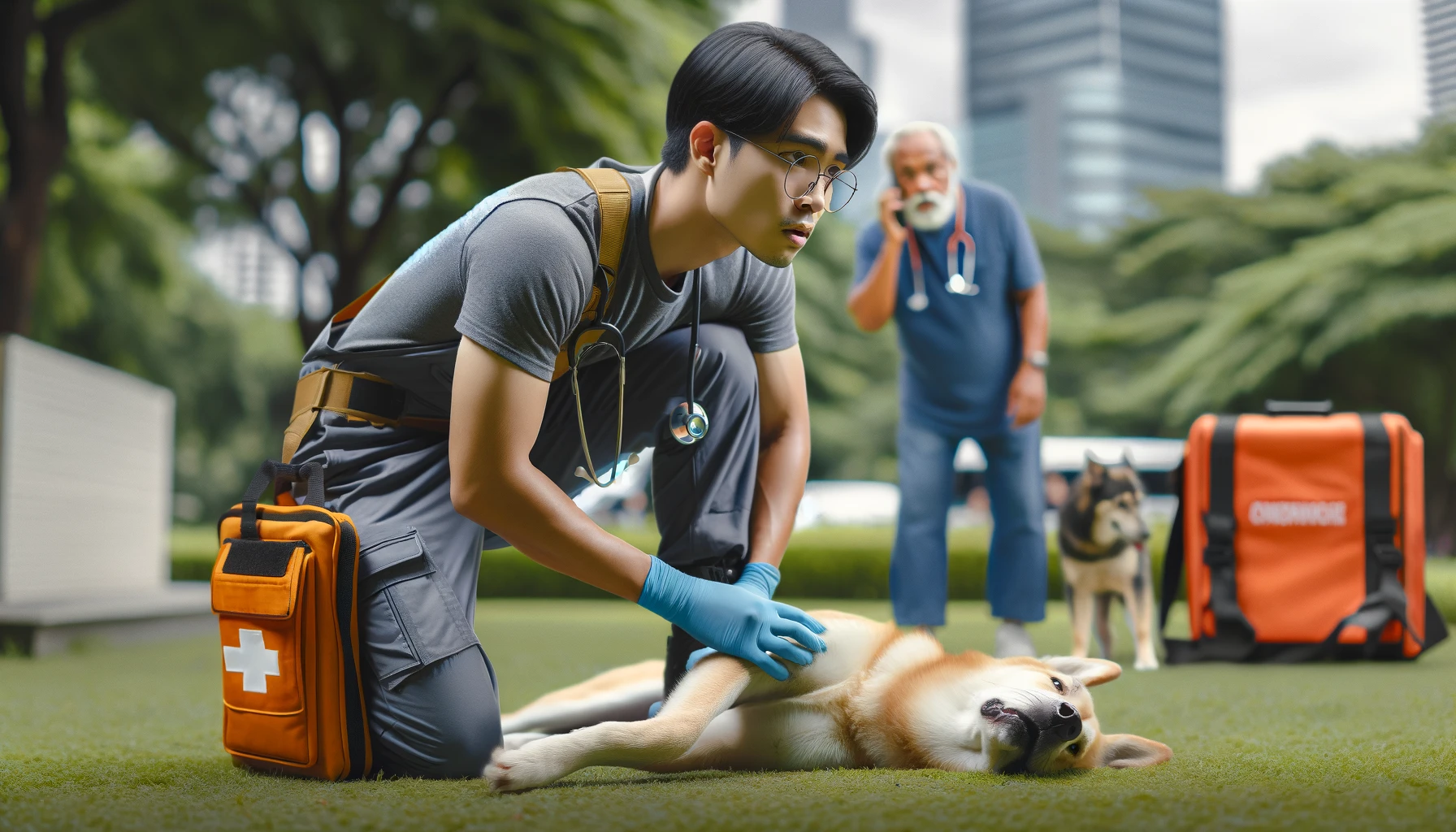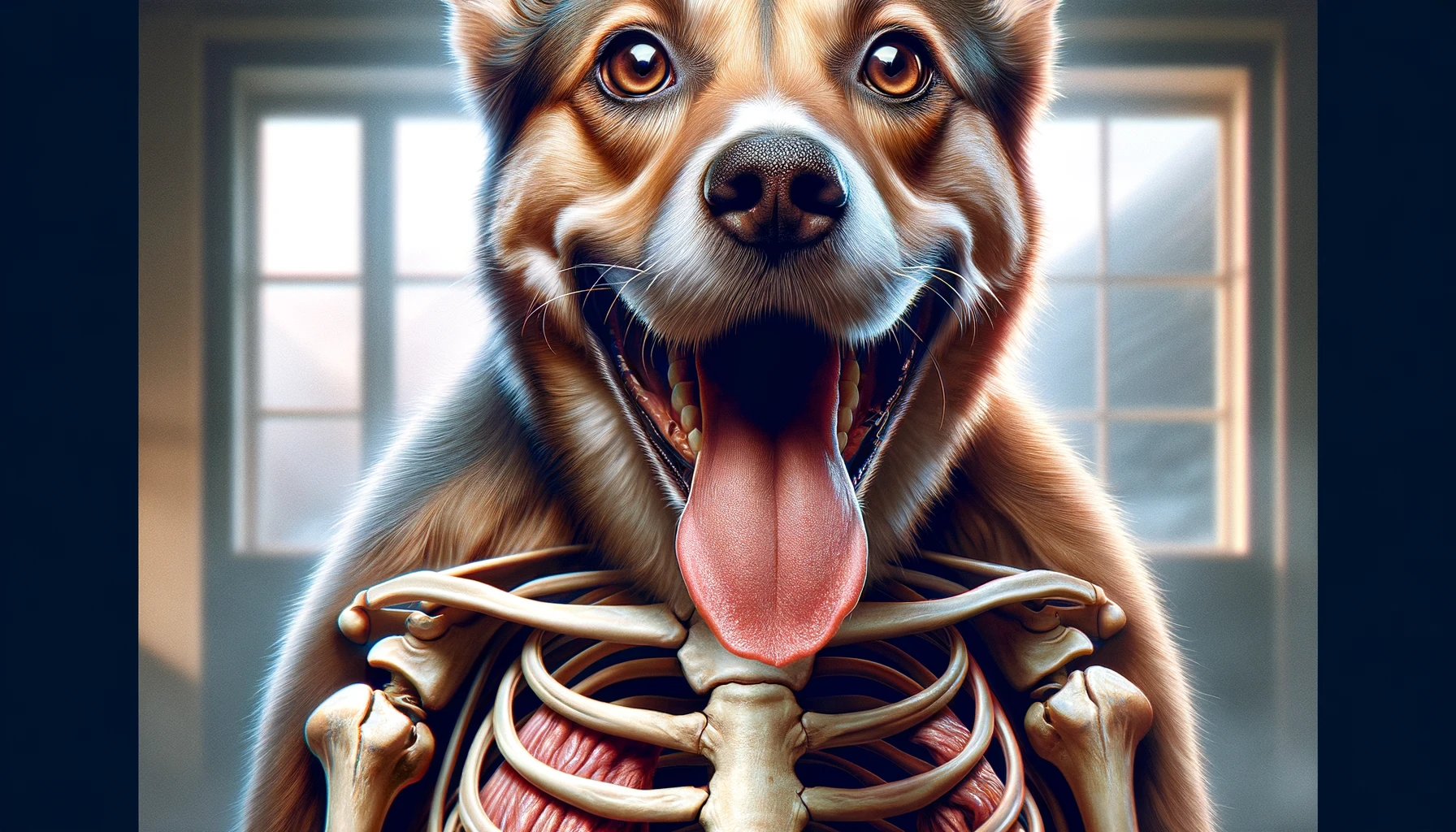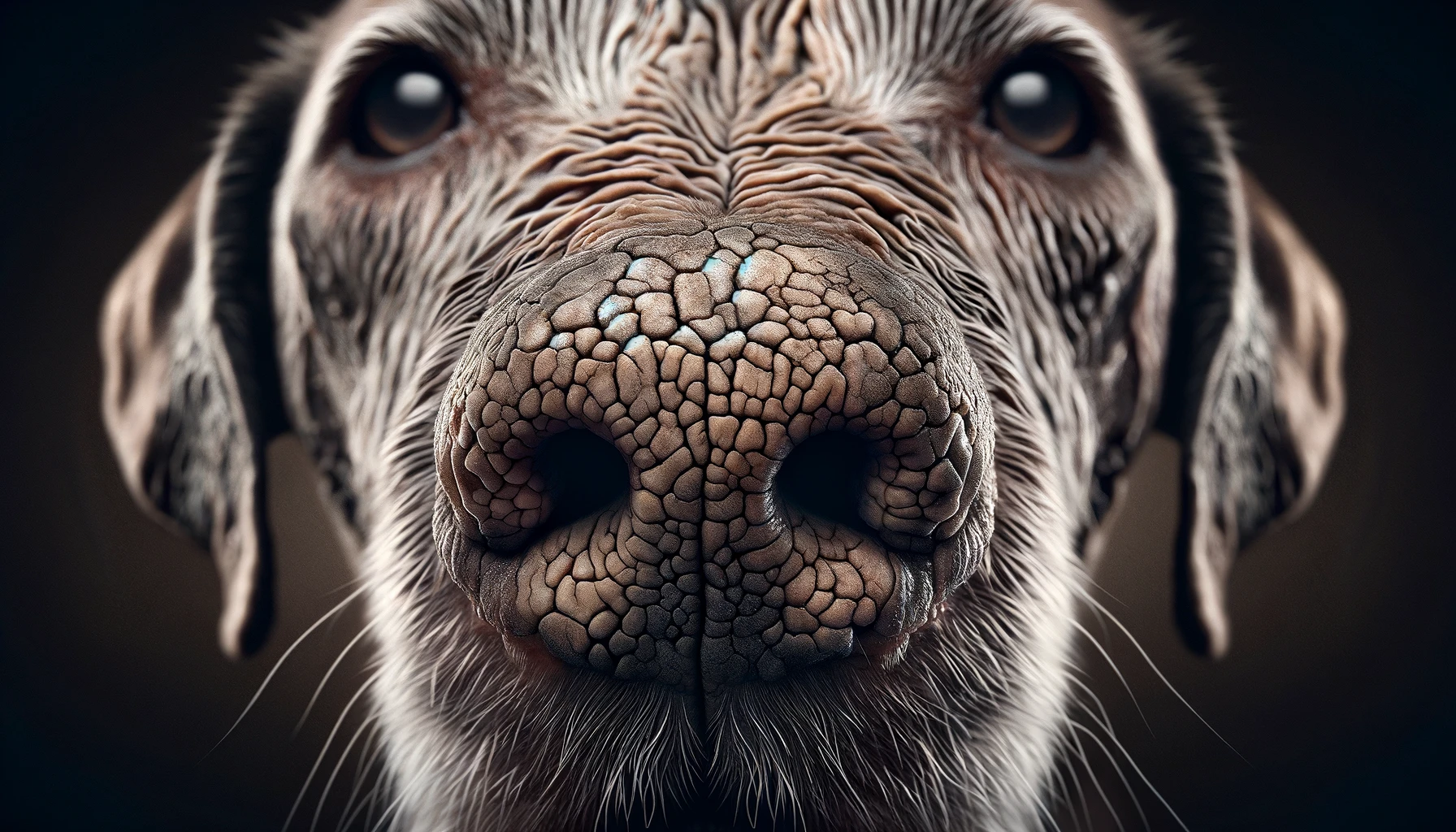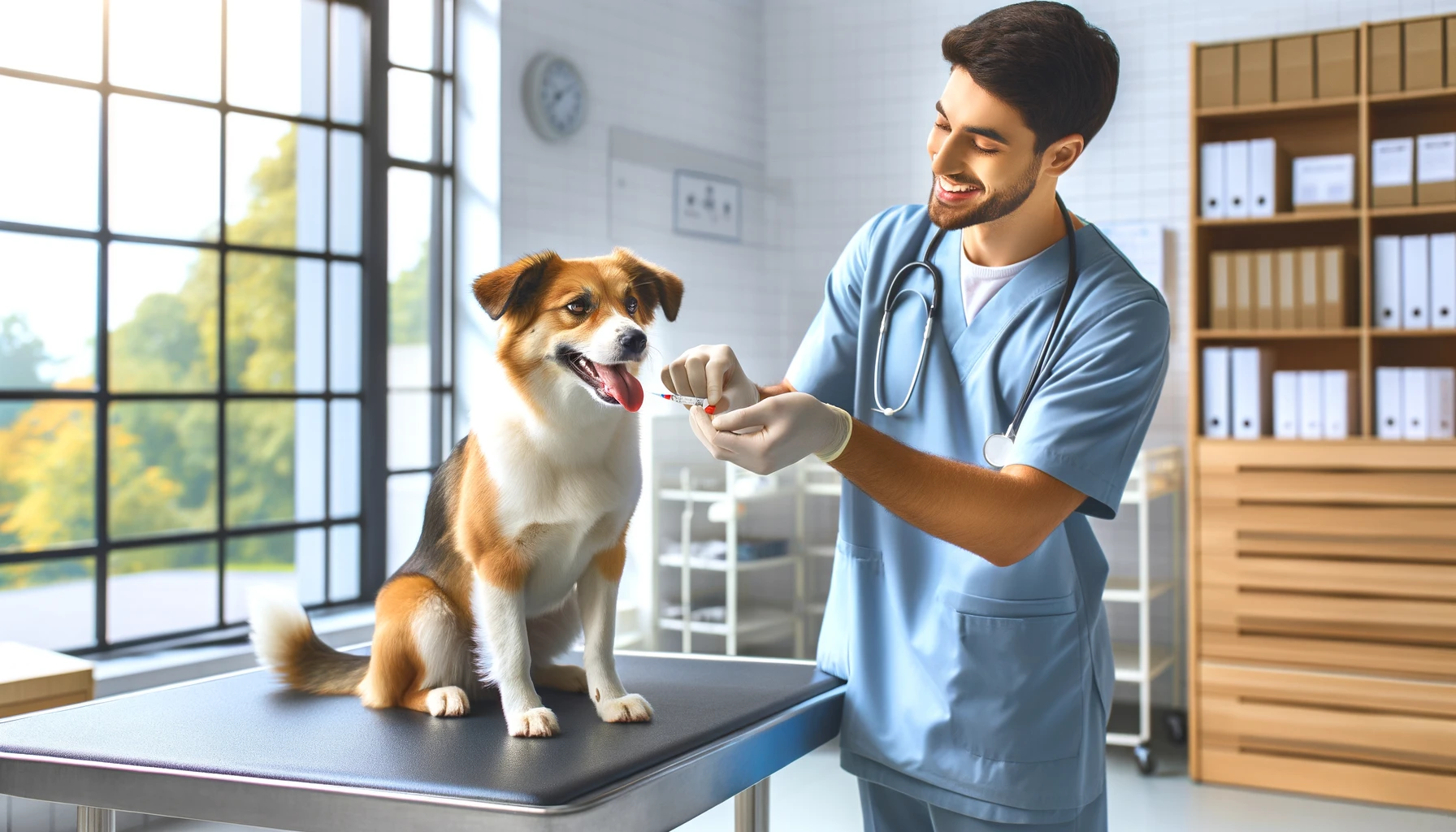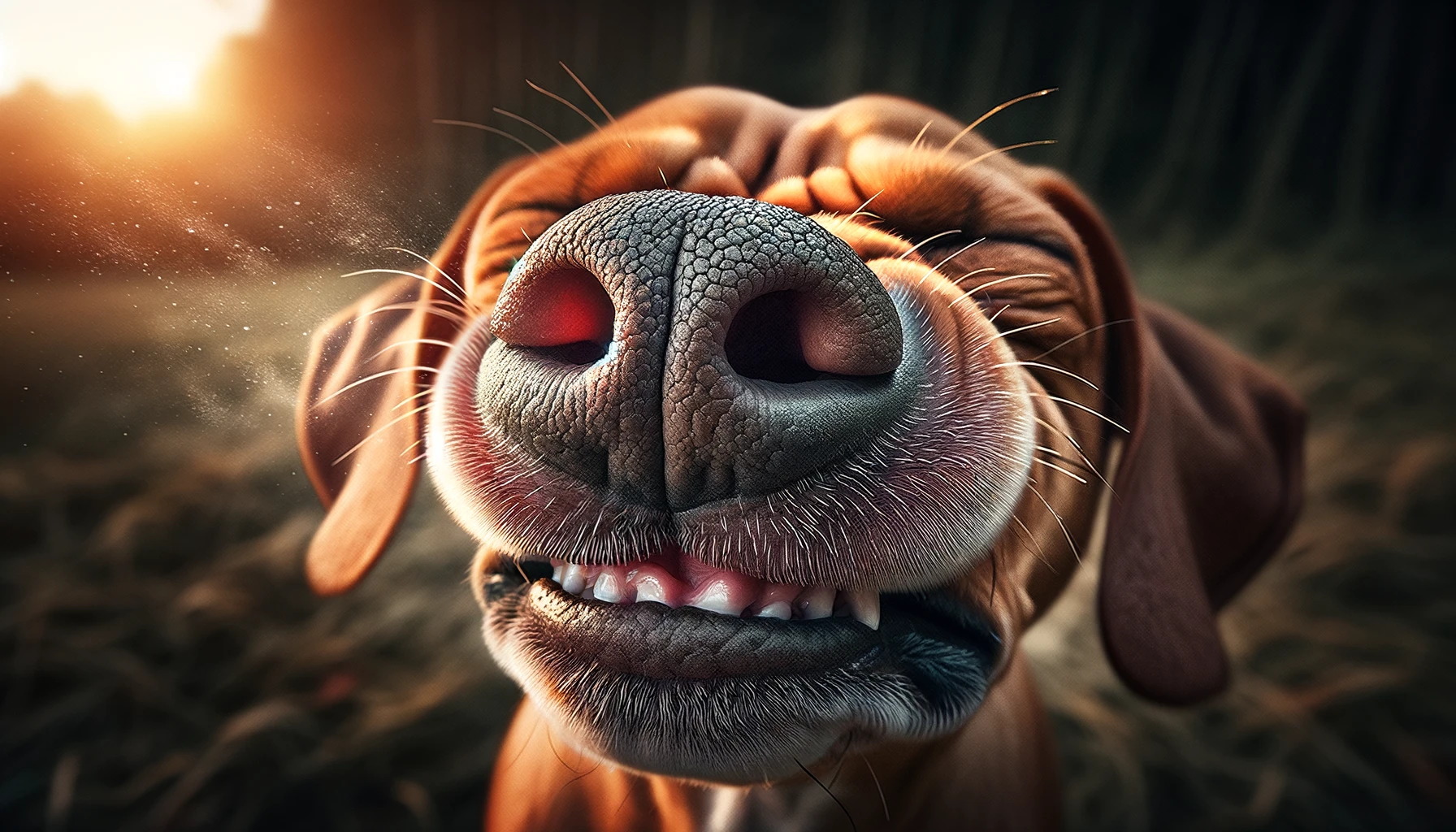Do you ever wonder how long your furry friend can go without water?
Dogs, just like humans, need water to survive. In fact, they can typically go about 2-3 days without water. However, it’s important to note that dehydration can have serious consequences for a dog’s health. Without access to water, their vital organs can fail, potentially leading to death.
If your dog is sick and refuses water for more than a day, it’s crucial to seek immediate veterinary assistance. Veterinarians may administer IV fluids to keep your dehydrated pup hydrated while they diagnose and treat the underlying cause.
So, remember to always provide fresh water for your four-legged companion and keep an eye on their hydration levels.
Key Takeaways
- Dogs’ water needs are influenced by factors such as size, age, breed, and activity level.
- Dehydration in dogs can lead to serious health issues and even death.
- Signs of dehydration in dogs include listlessness, excessive panting, dry mouth and gums, poor appetite, and sunken eyes.
- Water is crucial for a dog’s overall health, including digestion, body temperature regulation, joint health, and overall well-being.
Factors Affecting Dogs’ Water Needs
Factors that affect dogs’ water needs include their size, age, breed, and level of activity. It’s essential for dogs to have access to water every day to survive. Without water, dogs can become dehydrated, which can lead to serious health issues.
How long can dogs go without water? Well, the answer depends on various factors. Generally, dogs can survive for about three to five days without water, but this can vary based on individual circumstances. For example, smaller dogs have a higher metabolic rate and may require more water compared to larger dogs. Puppies and senior dogs also have different water requirements. Additionally, certain breeds are more susceptible to dehydration and may need extra water intake.
Furthermore, highly active dogs, such as working dogs or those engaging in vigorous exercise, lose more fluids through panting and sweating, and therefore, need more water to stay hydrated. It’s crucial to provide dogs with access to fresh, clean water at all times to ensure their well-being and prevent dehydration.
Signs of Dehydration in Dogs
To recognize signs of dehydration in your dog, pay close attention to their behavior and physical symptoms. Dehydration occurs when your dog’s body loses more water than it takes in, which can happen if they go without drinking for long hours.
One of the most common signs of dehydration is listlessness. If your dog is unusually lethargic and lacks energy, it may be a sign that their blood circulation is affected due to dehydration.
Excessive panting is another indicator. If your dog is panting heavily without any apparent reason, it could be a sign that they’re dehydrated.
Dry mouth and gums are also common signs of dehydration. If you notice that your dog’s mouth is dry or their gums appear to be lacking moisture, it’s important to take action to rehydrate them.
Poor appetite can also be a symptom of dehydration. When dogs are dehydrated, they may find it difficult or painful to chew and swallow, leading to a loss of interest in food.
Lastly, keep an eye out for sunken eyes. Severe dehydration can cause the eyes to appear noticeably sunken.
If you observe any of these signs in your dog, it’s crucial to provide them with water and consult a veterinarian if their condition doesn’t improve.
Importance of Water for Dogs
Dogs rely on consistent access to water for their overall health and well-being. Water is essential for their survival and plays a crucial role in maintaining proper organ function and circulation. Without water, dogs can quickly become dehydrated, leading to serious health complications. Responsible pet owners should ensure that their dogs always have access to fresh, clean water to prevent dehydration.
Regular access to water improves a dog’s quality of life. It helps in digestion, nutrient absorption, and waste elimination. Water also helps regulate body temperature, especially during hot weather or physical activity. Adequate hydration supports joint health, as it lubricates and cushions the joints, preventing discomfort and inflammation.
It is important to pay attention to whether your dog is drinking enough water. Some dogs may refuse to drink due to various reasons, such as illness or stress. If your dog shows symptoms of dehydration, such as dry gums, sunken eyes, or lethargy, it’s crucial to provide them with more water immediately.
Duration of Water Deprivation for Dogs
If you deprive your dog of water, they can typically survive for approximately 2-3 days. However, it’s important to note that this timeframe can vary depending on various factors such as the dog’s size, age, overall health, and environmental conditions.
Water is essential for a dog’s survival as it plays a crucial role in maintaining their bodily functions. Without access to water, dogs can quickly become dehydrated, leading to serious health complications and potentially even death. Dehydration occurs when the body loses more water than it takes in, resulting in an imbalance of electrolytes and a disruption in normal bodily processes.
During the initial stages of water deprivation, dogs may show signs of thirst, restlessness, and decreased activity. As dehydration progresses, more severe symptoms may appear, including dry gums, sunken eyes, lethargy, and loss of appetite. If left untreated, dehydration can lead to organ damage and ultimately be fatal.
It is crucial to ensure that your dog always has access to fresh and clean water. If your dog refuses to drink water for more than a day or shows signs of severe dehydration, immediate veterinary attention is necessary. A veterinarian may administer intravenous fluids to rehydrate the dog while diagnosing and treating the underlying cause of the dehydration.
Encouraging Dogs to Drink More Water
To encourage your dog to drink more water, there are a few key points to consider.
First, make sure you place the water bowl in a location that’s easily accessible and inviting for your dog.
You can also try adding flavor to the water or offering alternative hydration options like raw goat’s milk or bone broth popsicles.
Lastly, it’s important to monitor your dog’s water intake and seek veterinary advice if you have concerns about dehydration.
Water Bowl Placement
Placing water bowls strategically throughout your home can effectively encourage your furry friend to drink more water. Dogs can survive up to three days without water, but without enough access to clean water, their vital organs will fail, potentially leading to death. It’s important to make sure your dog has access to fresh water every day.
Dehydration can cause a variety of issues, including dry eyes, fatigue, and improper blood flow. Healthy dogs can go several hours without drinking water, but if your dog refuses to drink or goes longer without water, it may be a sign of dehydration or urinary tract issues.
Encourage your dog to drink more water by keeping water bowls in easily accessible areas and offering wet food, which has a higher water content. Remember, hydration is vital for your dog’s health, so make sure they always have access to water.
Flavorful Hydration Options
To encourage your dog to drink more water, try adding flavor to their water with options like raw goat’s milk, bone broth popsicles, or frozen treats.
While dogs can technically go without water for a few days, it’s important to make sure they stay hydrated to avoid potential health issues. Dogs can become dehydrated quickly, especially during hot weather or after vigorous exercise.
As a general guideline, dogs need about 1 ounce of water for every pound of body weight. For an average adult dog, this means they should consume around 30-70 ounces of water per day.
You can check if your dog is properly hydrated by gently pinching the skin on their neck and seeing if it immediately goes back into place. If it takes longer, your dog may be dehydrated.
Monitoring Water Intake
To ensure your dog stays properly hydrated, it’s important to monitor their water intake and encourage them to drink more. Dogs need to drink an ounce of water for every pound they weigh. It’s important to note that this is a general guideline, and some dogs may require more or less water based on their activity level, body weight, and overall health.
To make sure your dog is getting enough water, measure the exact ounces based on their weight and provide more water than the recommended amount. Regularly check if your dog finishes all the water you provide, as this can help determine if they’re consuming enough.
If your dog isn’t drinking enough water, it could lead to health issues, such as dehydration or urinary tract problems. If you notice any signs of dehydration, such as lethargy, dry gums, or sunken eyes, seek immediate medical attention for your dog.
Encourage your dog to drink more water by offering fresh water throughout the day, using a clean water bowl, and even adding flavorings like low-sodium chicken or beef broth to make it more enticing.
Puppies’ Water Needs and Limitations
Ensure your puppy has access to an ample supply of fresh water to meet their specific water needs and prevent dehydration.
Puppies, due to their rapid growth and fast metabolism, shouldn’t go more than a few hours without water. It’s essential to monitor their water intake closely.
A transitioning puppy, moving from milk to solid food, should drink about half a cup of water every other hour. Puppies are prone to dehydration and may require more frequent access to water. It’s crucial to consider their age, size, and activity levels when determining their water needs.
To check if your puppy is adequately hydrated, observe the elasticity of their skin. Gently pinch the skin on their back or neck and let go. If the skin flattens out immediately, your puppy is well-hydrated. However, if the skin takes time to return to its normal shape, dehydration may be a concern. Other symptoms of dehydration in puppies include dry gums and lethargy. If you notice these signs, contact your vet immediately.
What to Do If Your Dog Refuses to Drink Water
If your dog refuses water, it’s crucial to take immediate action. Dogs can go without water for a limited time, but it’s important to address the issue promptly to prevent dehydration. A dog should ideally drink enough water to meet its daily hydration needs, which can vary depending on factors such as size, activity level, and weather conditions. If your dog refuses to drink water for more than a day, it’s a cause for concern.
Not drinking enough water can lead to dehydration, which can have serious consequences for your dog’s health. Dehydration can cause symptoms such as dry gums, sunken eyes, lethargy, loss of appetite, and dark urine. In severe cases, it can result in organ failure and even death. Therefore, it’s essential to contact your vet immediately if your dog refuses to drink water or shows signs of dehydration.
In the meantime, you can try encouraging your dog to drink by offering them small amounts of water regularly. You can use a syringe or a dropper to give them a few drops of water at a time. If your dog still refuses to drink, it’s important not to force them, as it can cause further stress and discomfort. Instead, seek professional veterinary advice to determine the underlying cause of their refusal to drink and provide appropriate treatment.
Long-Term Consequences of Water Deprivation in Dogs
When your dog refuses to drink water for an extended period of time, it’s important to understand the potential long-term consequences of water deprivation.
Water is often taken for granted, but it plays a crucial role in maintaining a dog’s overall health and well-being.
Without an adequate water supply, dogs can experience extreme dehydration, which can lead to organ damage and even death. The length of time a dog can go without water depends on various factors, including their size, activity level, and environmental conditions.
As a general rule, dogs should drink about half a cup of water for every pound they weigh. Depriving a dog of water for an extended period of time can have serious consequences on their bodily functions.
Without water, the body is unable to properly regulate temperature, transport nutrients, and eliminate waste. This can result in organ failure, impaired digestion, and a weakened immune system.
It’s important to be aware of the warning signs of dehydration, such as dry gums, sunken eyes, lethargy, and loss of appetite. If you notice any of these symptoms, it’s crucial to provide your dog with water immediately and seek veterinary attention.
Frequently Asked Questions
How Long Is It OK for a Dog to Not Drink Water?
It is crucial for your dog to stay hydrated. Make sure they drink water regularly to avoid health risks. If they’re not drinking enough, try encouraging them with fresh water, clean bowls, or other water alternatives.
Can a Dog Go 10 Hours Without Water?
You can let your dog go 10 hours without water, but it’s important to remember that optimal hydration is key to their well-being. Make sure to provide water alternatives and monitor their intake regularly.
Can Dogs Survive 2 Days Without Water?
Dogs can survive approximately 2-3 days without water, but it’s crucial to understand the importance of water consumption for canines. Prolonged water deprivation can lead to dehydration, organ failure, and even death.
What Are Signs of Dehydration in a Dog?
To recognize signs of dehydration in your dog, look for listlessness, excessive panting, dry mouth/gums, poor appetite, and sunken eyes. If you notice these, it’s important to act quickly to prevent complications.
Conclusion
So remember, water is essential for dogs to survive and thrive. Without access to water, a dog’s organs can fail, leading to potential death.
If your dog is refusing to drink water for more than a day, it’s crucial to seek immediate veterinary help. Dehydration affects all processes in the body, and prompt treatment is necessary.
As the saying goes, ‘Water is the lifeblood of our furry friends.’
